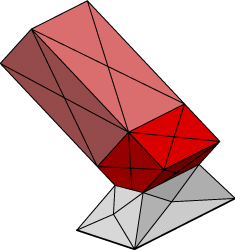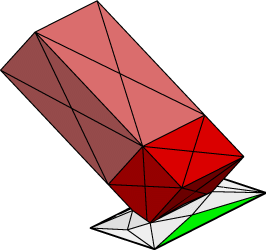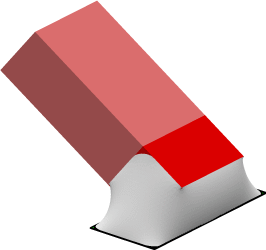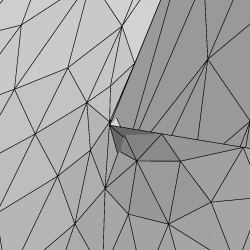



[Click for the tomb-F.fe datafile in a second window.]
This datafile adds rotation about the lower front edge of the chip. It is derived from tomb-E.fe, so the chip contact is represented by facets. This is done for confidence in energy and volume calculations. When the contact facets are removed in tomb-FF.fe, we can compare the numbers to make sure tomb-FF.fe is implemented correctly.
 |
 |
| Tilted to 30 degrees. | Lowered to pad. |
 |
 |
| Evolved to 9516 facets. | Undercutting flaw at top corner. |
tilt, in degrees.
dist is calculated as the ratio
of distance to the pad to the sum of distances to the pad and the chip.
change_tilt in the file "torque.cmd"
changes the tilt. It is invoked by
first setting the variable new_tilt to the new tilt angle.
read section uses the change_tilt command
to set the initial tilt at 30 degrees. It is much easier to do it this
way than change all the vertex coordinates up above in the datafile.
calc_tilt_torque to calculate the torque,
which is preserved in the variable tilt_torque.
gofar, there is a slight flaw at the top corners;
the outer fluid surface
penetrates into chip instead of the corner vertex pulling down, as
seen in the close-up image above. No vertex
is inside the chip, which makes this tough to handle with the mechanisms
in place. The flaw is probably so small there is no significant effect on the
forces. If it is deemed a problem, either move the corner
vertex down by hand, or put in
diagonal constraint plane (this is a general technique for handling a surface
bumping into a ridge; have vertices on a constraint plane running
through the ridgeline.)